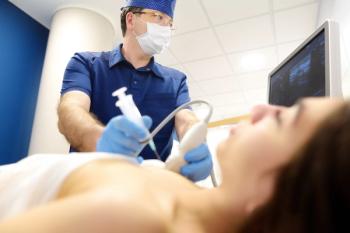
Oncology NEWS International
- Oncology NEWS International Vol 17 No 10
- Volume 17
- Issue 10
Visits to oncologists up, but profit per patient is on the decline
SAN FRANCISCO-New patient visits to oncologists increased by 22% over the past 3 years; however, oncologists’ average profit per patient fell by 91%. These were among the key findings of Onmark’s 2008 “Office-Based Oncology Benchmarking Survey,” which measures m operational and financial benchmarks among community-based oncology practices.
ABSTRACT: Data also suggest a shift in revenue from Medicare fee-for-service to Medicare Advantage plans.
SAN FRANCISCO-New patient visits to oncologists increased by 22% over the past 3 years; however, oncologists’ average profit per patient fell by 91%. These were among the key findings of Onmark’s 2008 “Office-Based Oncology Benchmarking Survey,” which measures m operational and financial benchmarks among community-based oncology practices.
Survey results indicated that between 2005 and 2007, the average number of oncologists per practice increased by 48% (from 2.9 to 4.3). Meanwhile, there was a 22% increase in the average number of new patient visits per oncologist (from 300 to 388) and a 29% increase in the average number of established patient visits (from 3,481 to 5,139).
Revenue per oncologist per patient varied over the survey years, averaging $4,464 in 2005, $5,250 in 2006, and $4,082 in 2007. However, the average profit per oncologist per patient decreased steadily, from $937 to $654 to $89-amounting to a 91% drop over the 3-year period.
Survey results also indicated that the percentage of oncologists’ total payor revenue accounted for by Medicare Advantage plans rose from 2% to 20% over the 3-year period, while the percentage collected from traditional Medicare fee-for-service programs fell by 16%. Drug costs accounted for 61% of a practice’s budget in 2005 but 79% in 2007; the percentage made up by costs for “other” items fell from 26% to 6%.
“In 2005, the entire industry had to come to terms with a significant decrease in the reimbursement for drugs administered in oncology clinics,” said Onmark vice president and general manager Mike Cunningham, PharmD, in a press statement. “This change required oncologists to adjust the way they traditionally conducted business and re-evaluate what financial success meant. As our survey shows, even 3 years later, we are still seeing the effects these changes have had on the industry.”
Articles in this issue
over 17 years ago
Nanoparticles extend survival in pancreatic ca patientsover 17 years ago
Nobody puts cancer in a corner!over 17 years ago
ACS spends big money to highlight healthcare system deficienciesover 17 years ago
Report finds high rate of adoption of IMRTover 17 years ago
Some HER2+ tumors prove resistant to trastuzumabover 17 years ago
NIH bankrolls molecular probes for targeted therapyover 17 years ago
Oropharyngeal ca: IMRT spares salivary glandsover 17 years ago
Fear of audit, lazy billing erodes profitsover 17 years ago
Apoptosis inducer hits melanoma with double whammyover 17 years ago
Triathlon for an MPD cureNewsletter
Stay up to date on recent advances in the multidisciplinary approach to cancer.
































































































